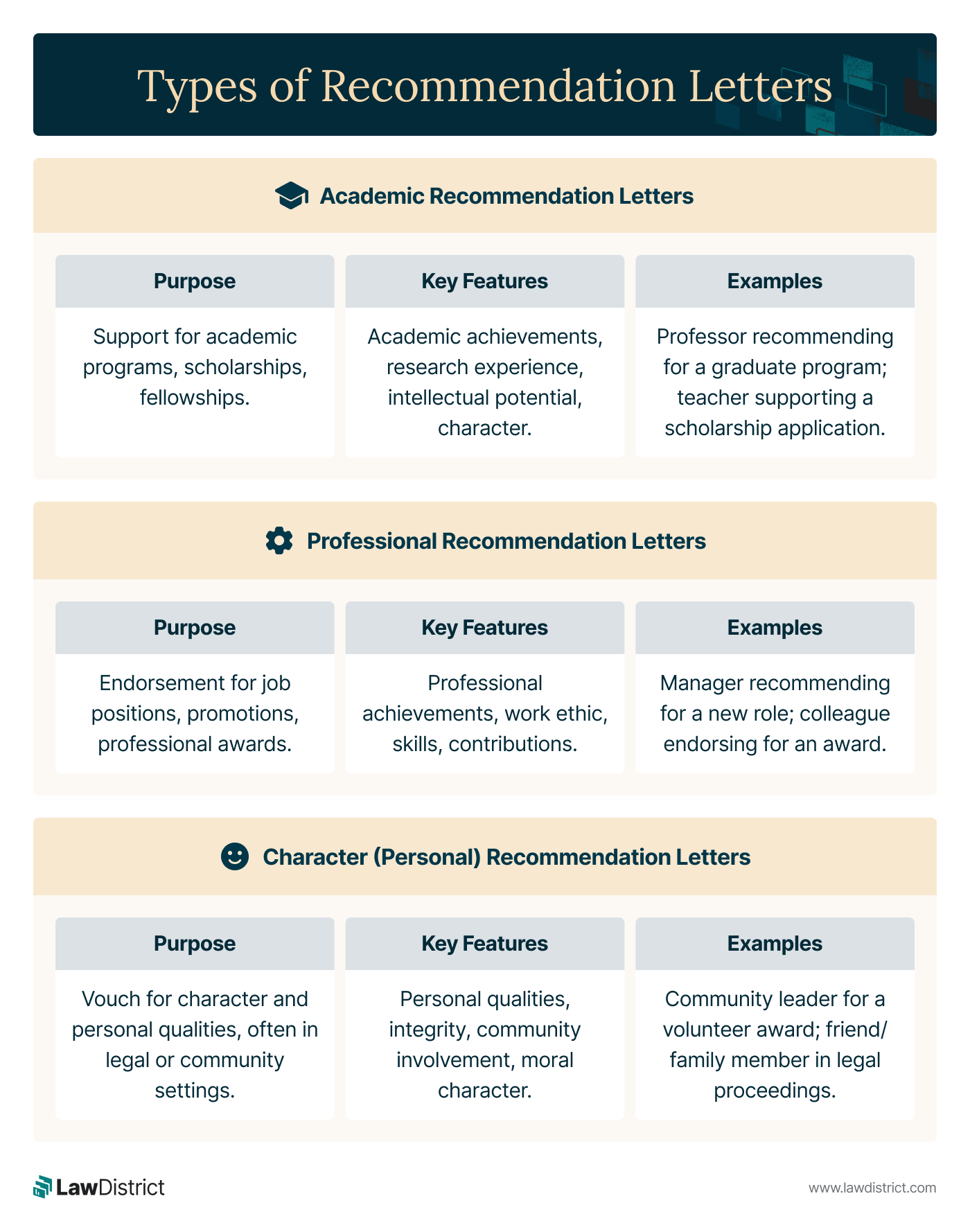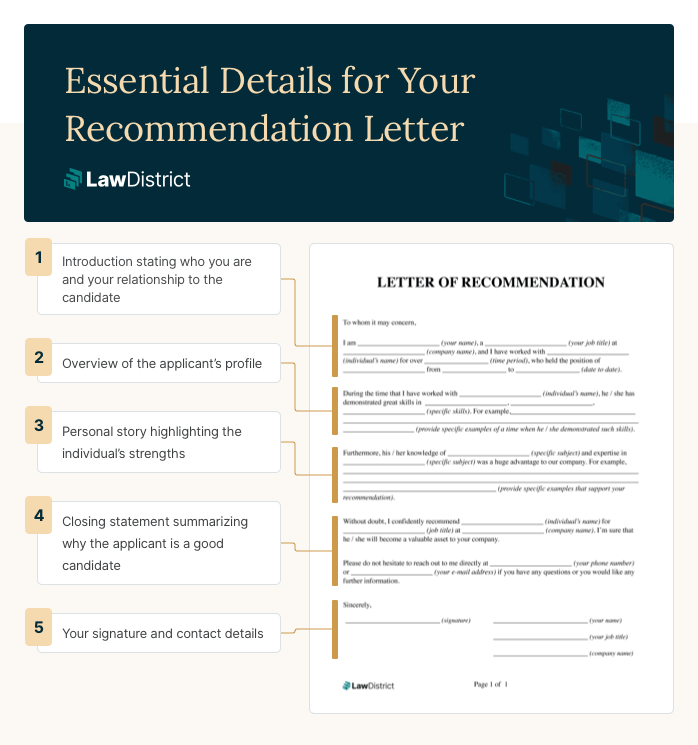Writing a recommendation letter can often be easier said than done. If you’ve been asked to write one of these letters, that means your opinion can play an important role in someone’s future, and it should be written correctly and accurately.
When applying for a job or study program, candidates are often asked to provide a letter of recommendation. This is typically used by hiring managers, recruiters, or admission officers to verify the credentials and qualities of the applicant.
This document is written by the individual’s previous employer, colleague, client, or teacher, and it should discuss the skills and qualifications that make the applicant a good fit for the position.
Keep reading to learn about how to write a letter of recommendation that will help you maintain a positive relationship with a past employee or student while maximizing their future chances of success.
Get Your Recommendation Letter Now

How to Decide Whether to Accept a Request for a Recommendation
Before starting to write your own recommendation letter, it’s important to determine whether you should write one in the first place. Since one of these letters can greatly influence a hiring decision at another company or an admission selection of a school, it must be written honestly and precisely.
Although it can be difficult to deny a request for a letter of recommendation, it’s important to consider whether you have enough positive stories or experiences to tell about the applicant. You’ll also need to promptly and courteously let them know whether you can meet their request so that they can make other arrangements if necessary.
Here are some of the main points to consider before accepting a request for a letter of recommendation:
- Whether you have been able to closely work with or directly observe the individual for sufficient time to elaborate on their professional profile
- If you are aware of any skills or experiences that the candidate could bring to the role they’re applying for
- If you have concrete and positive examples of the applicant’s work
Elements of a Letter of Recommendation
If you have decided that you can share sufficient knowledge about the applicant to write a recommendation letter, it’s time to get started.
To ensure that you are completely prepared to write this document, it’s also recommended that you ask the applicant for a description of the job or study program they’re applying for, as well as an updated resume.
This will enable you to match what the employer is looking for with the key characteristics the candidate possesses. In general, your letter of recommendation should include the following essential sections, in this order:
- A brief introduction defining your relationship to the applicant, who you are, and your professional expertise or qualifications.
- A professional overview describing what traits you have directly noticed in the applicant and how they are relevant to the opportunity.
- A relevant story that illustrates one or two of the key skills or characteristics of the applicant.
- An ending statemen that sums up why the individual is a good fit for the role.
- A signature that includes your contact details to prove your identity.

How to Write a Reference Letter
If you're considering writing a reference letter for someone you know, it's crucial to ensure you're well-acquainted with the person and can confidently vouch for their character.
This type of letter should shine a positive light on the candidate, focusing on personal qualities that are relevant to the position they're applying for.
Follow the steps below on how to make a recommendation letter:
Clarify your relationship with the candidate
Kick off your letter by detailing how you know the person. Aim for clarity and specificity in your examples. For instance, "Samantha has been a dependable colleague at the library for over three years."
Mention the length of your relationship
It's helpful to state how long you've known the candidate. You could say, "I've had the pleasure of knowing Chris through our local book club for the past five years".
Spotlight positive personal traits with examples
Choose at least three positive qualities of the candidate, offering specific examples where these traits were demonstrated. These might include resilience, teamwork, problem-solving skills, a cheerful disposition, punctuality, or a dedication to community service, among others.
End with a strong recommendation
Conclude your letter with a clear endorsement. A statement like, "For these reasons, I recommend Jamie for the role, confident that they will be a significant asset to your team," is effective.
Don't forget to provide your contact details, such as your email and phone number, making it easy for the recipient to reach out if they need more information.
Tips for Letters of Recommendation
In addition to following the recommended structure, your letter should also be written in a professional tone, similar to that of a business letter. However, it must maintain a positive outlook and there shouldn’t be anything included that can work against the applicant.
Make sure to also follow any instructions the candidate has provided you in terms of how and when to submit the letter. If you send in the letter after a specified deadline, you may hurt their application status. Furthermore, focus on the candidate’s most relevant achievements to bolster their chances of success.
Save time creating your recommendation letter with the help of LawDistrict’. Let our step-by-step template creator help you through the process of writing this important document, and download a letter of recommendation example that you can easily fill in.
FAQs
-
It's important to handle such requests with care and honesty. If you feel you cannot write a strong and positive letter due to insufficient knowledge of the person's work or character, or for any other reason, it's best to be upfront about it.
You might say, "I'm honored by your request, but I don't believe I'm the best person to provide the detailed and supportive recommendation you deserve."
Suggesting that they seek someone who can more accurately speak to their strengths and abilities is a constructive way to decline while still offering support.
-
A recommendation letter should follow a formal business letter format, starting with your contact information and the date at the top, followed by the recipient's name and address if known.
Begin the letter with a formal greeting, then move into the body of the letter, which should include an introduction stating your relationship to the candidate, a discussion of their qualifications and achievements, and a concluding paragraph with your recommendation.
Close with a formal sign-off and your signature. Need some guidance? Try our step-by-step template and be done in a few minutes.
-
If you're struggling to come up with positive attributes or achievements to highlight, it's crucial to have an honest conversation with the person who requested the letter.
Ask them to provide specific examples of their work or achievements that you might not be aware of. If, after this, you still feel unable to write a supportive letter, it's better to gently decline the request rather than write a lukewarm or insincere letter.
Explain that you want to ensure they receive the strongest possible recommendation and feel that someone else might be better suited to provide it.




